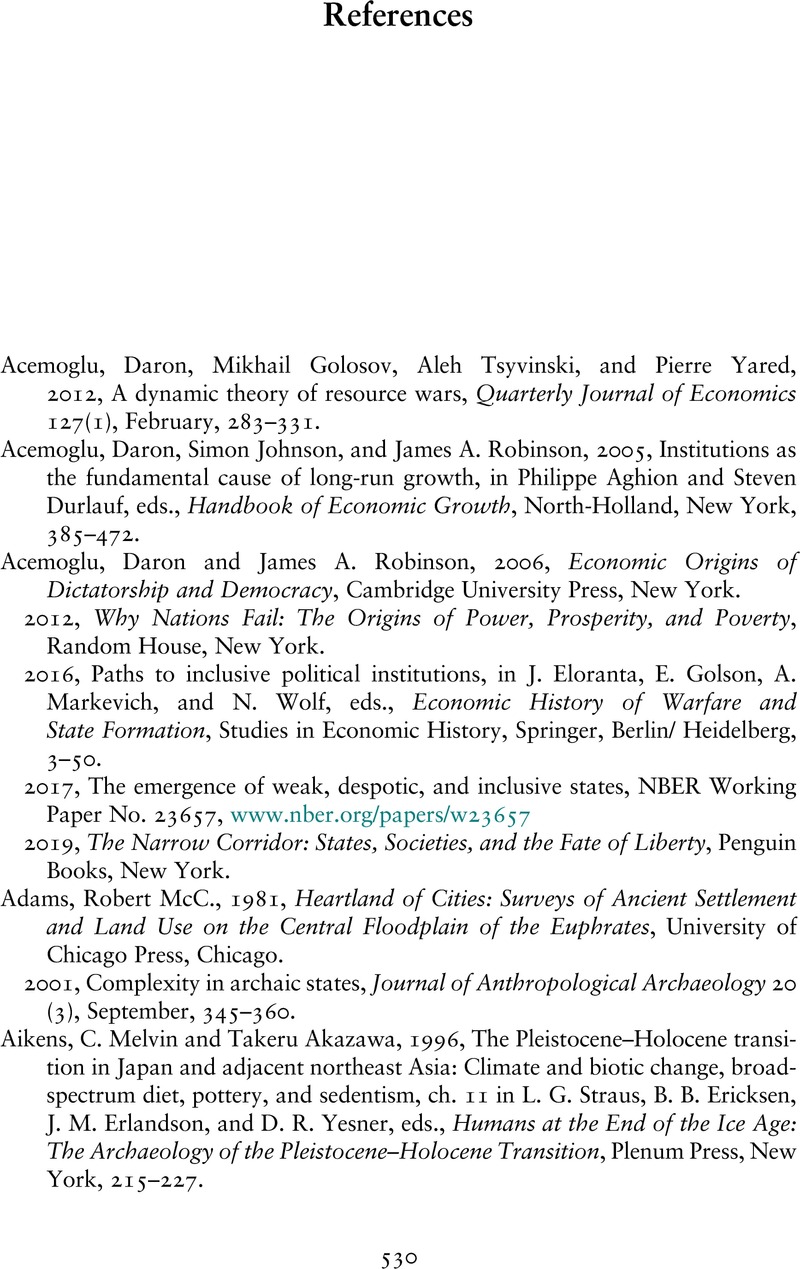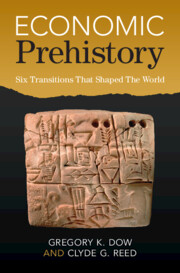Book contents
- Economic Prehistory
- Economic Prehistory
- Copyright page
- Dedication
- Contents
- Figures
- Tables
- Preface
- Acknowledgments
- Abbreviations
- Part I Prologue
- Part II Sedentism and Agriculture
- Part III Inequality and Warfare
- Part IV Cities and States
- Part V Epilogue
- References
- Author Index (Abridged)
- Subject Index
- References
References
Published online by Cambridge University Press: 10 February 2023
- Economic Prehistory
- Economic Prehistory
- Copyright page
- Dedication
- Contents
- Figures
- Tables
- Preface
- Acknowledgments
- Abbreviations
- Part I Prologue
- Part II Sedentism and Agriculture
- Part III Inequality and Warfare
- Part IV Cities and States
- Part V Epilogue
- References
- Author Index (Abridged)
- Subject Index
- References
Summary

- Type
- Chapter
- Information
- Economic PrehistorySix Transitions That Shaped The World, pp. 530 - 560Publisher: Cambridge University PressPrint publication year: 2023



